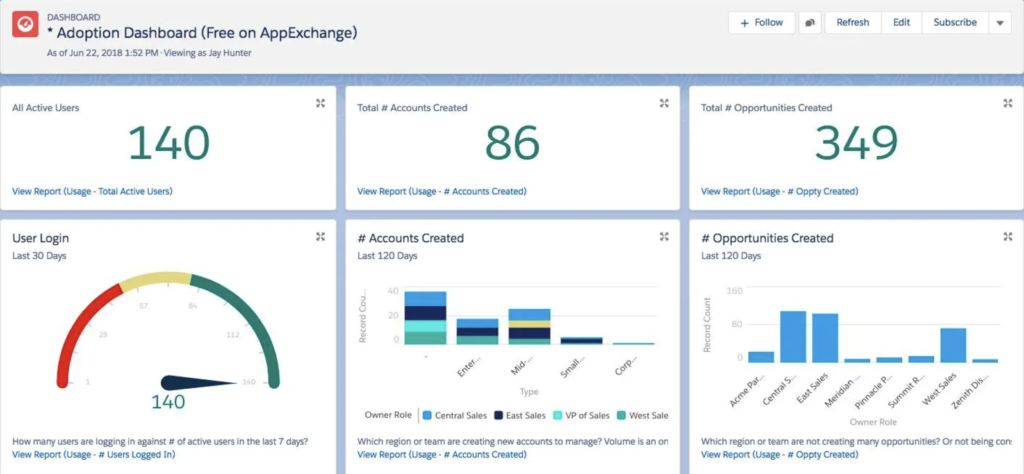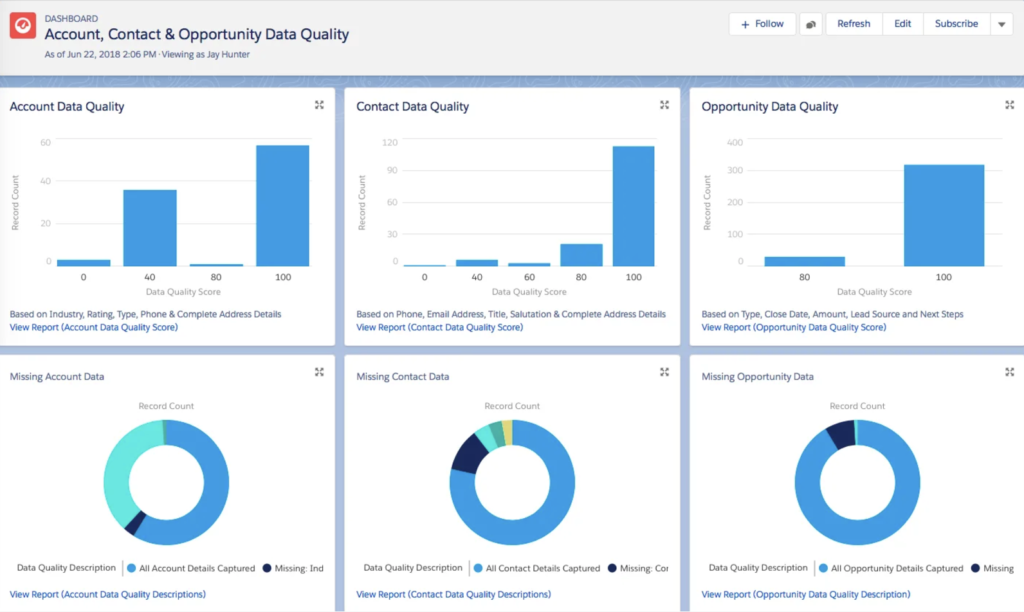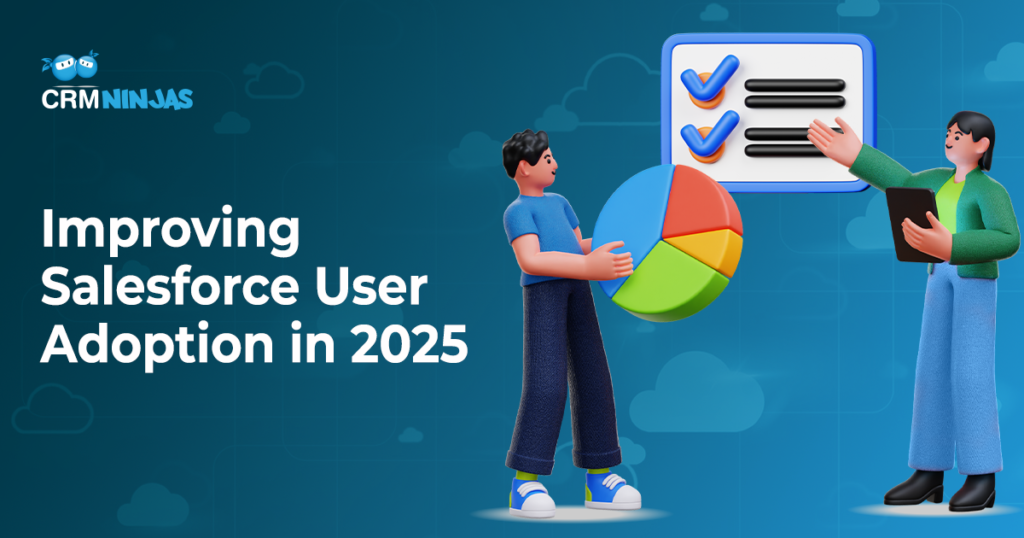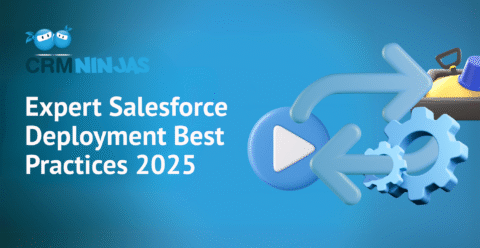Are you tired of watching your big investment in Salesforce go unused? Struggling with the frustration of employees clinging to outdated spreadsheets instead of embracing a powerful CRM?
You’re not alone. Many organizations face the challenge of low Salesforce user adoption, leaving them wondering how to turn things around.
CRMNinjas shares their expert advice on overcoming these hurdles. From leadership strategies to incentivizing users and simplifying workflows, discover actionable insights into improving Salesforce user adoption that can help drive your team’s success.
How to Improve Salesforce User Adoption
Having a Salesforce user adoption strategy from the very start is important, equipping users with the right resources to help them use Salesforce consistently—and it all starts with leadership.
Lead by Example: Commitment Starts at the Top
Leadership is key to successful Salesforce user adoption, and when executives and managers themselves use Salesforce to monitor performance, share insights, manage tasks, and more, they’re setting the tone for the rest of the organization.
Leading by example doesn’t end there, it also requires maintaining consistency from the top down.
“The thing that makes or breaks Salesforce user adoption is consistency,” notes Taylor Smith, Partner at CRMNinjas. “Establishing clear expectations from day one lets users see Salesforce as a solution, not an obstacle.”
“A new system is a major investment,” stresses Darrel Niemann, CEO at CRMNinjas, “and management must not allow staff to boycott adoption simply because they find a new system ‘too much work’, and are unwilling to change their ways. I’ve seen it happen too many times.”
So, how do you keep users engaged and excited about using Salesforce for their daily tasks? Incentives and team collaboration may be key.
Incentivize Users Who Use Salesforce
Both Taylor and Darrel at CRMNinjas highlight the importance of incentivizing users who are actively adopting and using Salesforce. Incentives and reward systems can be put in place to celebrate team members who achieve certain milestones. Tools like the Salesforce Adoption Dashboards on the AppExchange allow you to create engaging displays, such as a “Wall of Fame,” encouraging users who consistently use Salesforce to strive for recognition.
When you incentivize users, others are also motivated, making Salesforce top of mind across the organization. “If users feel like Salesforce is increasing their efficiency, that means it increases their ability to sell, or complete service requests, or just get off work five minutes early,” adds Taylor.
Encourage Team Collaboration
Another way to improve Salesforce user adoption is to encourage learning among team members. More experienced users can be appointed as designated “power users”, and mentor less experienced ones, assisting them when needed and sharing knowledge.
How to Make Salesforce User-Friendly?
Simplifying the user interface will make it easier for your team to consistently use Salesforce. This can include adding shortcuts to frequently used pages and customizing dashboards to show the most relevant information to them.
Get Your Team Up to Speed with Salesforce
Trailhead is a free online learning platform by Salesforce that provides interactive tutorials, hands-on challenges, and gamified modules to improve user skills and the onboarding process. Managers and executives can also use Trailhead by simulating tasks in a Trailhead Playground and personalizing the learning paths for their organization.
Another key consideration for making Salesforce more user-friendly for your organization is to automate as many tasks and processes as possible. Salesforce Flow allows admins to design step-by-step, guided experiences for data entry or complex processes. With Flows, organizations can automate workflows, saving time for users and encouraging them to be more consistent with their data entry.
In addition, AppExchange has some apps that are good for user adoption, like: Gamify, Adoption Tracker, AdoptionHero, and more.
Other apps on AppExchange like DocuSign allow users to send, sign, and manage agreements without ever having to leave Salesforce. This is beneficial for sales teams handling contracts or customer agreements because it keeps everything within Salesforce.
What are Some Early Indicators of Success when Measuring Salesforce User Adoption?
Once you’ve taken steps to make Salesforce more user-friendly, the next question is: how do you know if it’s working? Tracking login activity, monitoring how often users create or update records, and evaluating data quality can help organizations spot areas where some users might need extra guidance or training.
Tracking Salesforce Login Rates and Record Activity
Monitoring login rates is a great indicator of Salesforce user adoption. You can track how often users login to see how engaged they are from the start and identify who might need extra help.
In addition, record creation and record updates help you monitor the number of records that users create or modify, like opportunities, activities, or contacts. A large volume of record updates means that users are actively participating in data management and using Salesforce for their daily tasks.

A strong sign of successful Salesforce adoption is high-quality data. Data records should be accurate and complete, and tracking data trends will help reveal if there are any issues with Salesforce user adoption. For example, if users skip important (but non-required fields) regularly, they may not understand the value of the data they’re supposed to capture in Salesforce or are confused–indicating that they may need more training.
Leadership can also use Salesforce tools like the Adoption Analytics Template to create apps with datasets and dashboards that track CRM Analytics asset usage.

Turning Salesforce into a Tool Your Team Loves to Use
To get your staff to consistently use Salesforce, you need to create an environment where they see its benefits in their daily tasks and processes.
This involves team collaboration so users can learn from each other, offering incentives to keep engagement high, simplifying the platform to make it more user-friendly, and regularly gathering feedback to address any gaps or challenges.
Most importantly, leadership needs to set the tone. When managers and executives consistently use Salesforce themselves, it reinforces its value.

Need Expert Guidance on Salesforce User Adoption Strategies?
CRMNinjas is here to guide you through the process.
Book a no-obligation, 30-minute consultation where our experts can review your project and help identify your specific needs.





